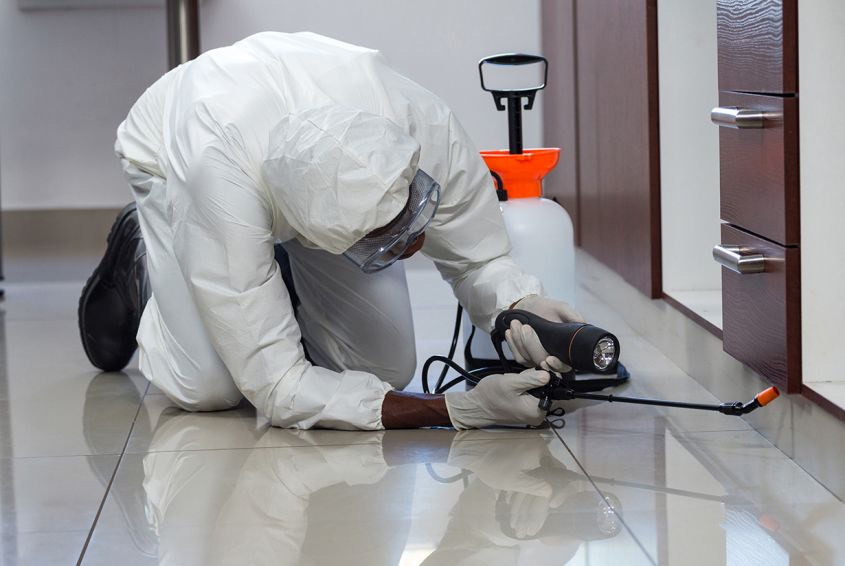Imagine a world where the war on pests doesn’t involve arming yourself with an arsenal of chemical sprays, sticky traps, and pungent repellents. Picture a home that, by its very design, acts like a fortress against those pesky invaders.
Sounds like science fiction? Think again! By weaving pest prevention into the very fabric of a building’s architecture and design, we can craft spaces that are not just eye-catching but also naturally inhospitable to pests.
Welcome to the riveting crossroads of design, architecture, and the art of keeping critters at bay—this guide is your roadmap to that future!
The Importance of Pest Prevention

source: pinterest.com
Before we plunge into the world of architectural wizardry that keeps pests at bay, let’s get real about why this is a big deal.
Picture this, rodents gnawing through your walls, termites munching on your foundation, and mosquitoes turning your backyard into a buzzing nightmare. These aren’t just minor annoyances; they’re full-blown crises that can wreak havoc on your home and your health.
Now, let’s talk about the old-school way of dealing with this: toxic chemicals. Sure, they might kill the bugs, but they’re also doing a number on you and Mother Earth. It’s like using a sledgehammer to crack a nut—overkill and risky.
That’s where design-focused pest prevention comes into play. It’s the elegant solution to a messy problem, offering a way to live in harmony with our environment while keeping it critter-free.
Design Principles For Pest Prevention
Architecture and design stand to add a lot of functional value to a building that goes beyond just mere vanity.
In recent years, making homes more hospitable to humans, and repelling unwanted visitors using the forces of design and architecture has become quite the artform, while staying grounded in the principles of science.
Material Selection

source: pinterest.com
The choice of building materials can significantly impact the likelihood of a pest infestation. For example, using treated wood can deter termites, while metal and concrete are generally resistant to rodents. Even the type of paint used can make a difference; certain finishes are less appealing to insects.
Landscaping
The surrounding environment plays a crucial role in attracting or repelling pests. Overgrown bushes and trees can provide a haven for rodents and insects.
By maintaining a clean and well-trimmed landscape, you can minimize the chances of pests finding their way into your building.
Drainage Systems
Ever wondered why your backyard turns into a mosquito rave every summer? The culprit might be right under your nose—or rather, under your feet. That’s right, poor drainage can turn your property into a mosquito breeding ground faster than you can imagine.
So, if you’re tired of slapping away mosquitoes and want to reclaim your outdoor spaces, it’s time to invest in a drainage system that means business.
Ventilation

source: pinterest.com
A well-ventilated space is like kryptonite to pests, and It banishes the damp, shadowy hideouts that make your home a five-star resort for rodents and insects. So, if you want to make your home a no-go zone for pests while also boosting your own well-being, it’s time to let your home breathe!
Architectural Innovations
Raised Foundations
Ever thought about giving your home a lift? No, we’re not talking about a facelift, but literally elevating it off the ground. Welcome to the world of raised foundations, where your home sits on stilts, pedestals, or platforms, and you get to enjoy the high life—free from ground-dwelling pests!
This lofty design isn’t just about keeping pests at arm’s length; it also makes it a breeze to inspect and treat any potential problem areas. It’s like having a built-in security system that not only keeps the invaders out but also lets you easily kick them out if they somehow crash the party.
Sealed Entry Points
Innovative designs now include features like built-in door sweeps and window seals that prevent pests from entering. These are not only effective but also blend seamlessly into the overall design.
As simple and innocuous as these solutions seem, they can effectively turn your house into an impenetrable fortress when it comes to the most common types of pests, making them one of the most affordable options on this list.
Integrated Pest Management Systems
Some modern buildings are now designed with integrated pest management systems. These include features like pheromone traps built into the walls and ultrasonic repellents that are part of the building’s electrical system.
At large multi-unit developments, industrial and commercial establishments, these systems are finding themselves integrated into various specialized software for pest control professionals, enabling smart approaches, and better monitoring.
Case Studies

source: pinterest.com
The Eden Project
Located in Cornwall, UK, the Eden Project is a set of biomes housing thousands of plant species. The design incorporates pest-resistant materials and a unique ventilation system that helps regulate temperature and moisture, making it less hospitable for pests.
Green Building Councils
Various Green Building Councils around the world are now recognizing the importance of pest-resistant design. Buildings that incorporate these features can earn points towards sustainability certifications like LEED.
Conclusion
Pest prevention through design and architecture is an exciting and growing field. By considering pest management in the initial stages of design, architects and builders can create spaces that are both beautiful and functional.
This approach not only reduces the need for chemical treatments but also results in healthier, more sustainable environments. As we continue to innovate in this area, the possibilities are endless, offering a future where living in harmony with nature doesn’t mean having to share your home with unwanted guests.



